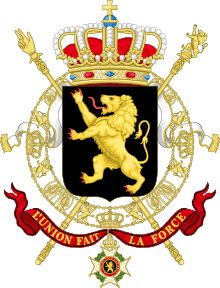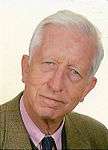1974 Belgian general election
General elections were held in Belgium on 10 March 1974.[1] The Belgian Socialist Party emerged as the largest faction in the Chamber of Representatives with 59 of the 212 seats. Voter turnout was 90.3%.[2] Elections were also held for the nine provincial councils, as well as for the Council of the German Cultural Community for the first time.
| |||||||||||||||||||||||||||||||||||||||||||||||||||||||||||||||||||||||||||||||||||||
212 seats in the Chamber of Representatives | |||||||||||||||||||||||||||||||||||||||||||||||||||||||||||||||||||||||||||||||||||||
|---|---|---|---|---|---|---|---|---|---|---|---|---|---|---|---|---|---|---|---|---|---|---|---|---|---|---|---|---|---|---|---|---|---|---|---|---|---|---|---|---|---|---|---|---|---|---|---|---|---|---|---|---|---|---|---|---|---|---|---|---|---|---|---|---|---|---|---|---|---|---|---|---|---|---|---|---|---|---|---|---|---|---|---|---|---|
| |||||||||||||||||||||||||||||||||||||||||||||||||||||||||||||||||||||||||||||||||||||
 Colours denote the winning party in each electoral district (for the Chamber of Deputies).
a In the 1971 election, the Belgian Socialist Party ran as its two separate language parts (owing to the recent establishment of two sub parties), however they ran as one under the Socialist prime minister for this election, with his Walloon section of the party's results showing here. | |||||||||||||||||||||||||||||||||||||||||||||||||||||||||||||||||||||||||||||||||||||
| |||||||||||||||||||||||||||||||||||||||||||||||||||||||||||||||||||||||||||||||||||||
 |
|---|
| This article is part of a series on the politics and government of Belgium |
|
|
|
|
Federal Cabinet |
|
|
Results
Chamber of Deputies
| Party | Votes | % | Seats | +/– |
|---|---|---|---|---|
| Belgian Socialist Party | 1,401,725 | 26.66 | 59 | New |
| Christian People's Party | 1,222,646 | 23.25 | 50 | +10 |
| Party for Freedom and Progress | 798,818 | 15.19 | 30 | +26 |
| People's Union | 536,287 | 10.20 | 22 | +1 |
| Christian Social Party | 478,209 | 9.09 | 22 | +7 |
| FDF-PDLP | 301,303 | 5.73 | 14 | New |
| Walloon Rally | 269,455 | 5.12 | 11 | −1 |
| Belgian Socialist Party (Wallonia) | 164,592 | 3.13 | 0 | −25 |
| Communist Party of Belgium | 107,481 | 2.04 | 2 | New |
| BSP–Red Lions | 86,929 | 1.65 | 0 | New |
| UDP | 58,257 | 1.11 | 0 | New |
| Party for Freedom and Progress (Wallonia) | 20,866 | 0.40 | 0 | −11 |
| AMADA/TPO | 19,794 | 0.38 | 0 | New |
| VFP-PFU | 18,511 | 0.35 | 0 | New |
| MO | 9,184 | 0.17 | 0 | New |
| Party of German-speaking Belgians | 8,700 | 0.17 | 0 | New |
| PLW | 6,846 | 0.13 | 0 | New |
| FDP | 4,729 | 0.09 | 0 | New |
| UDP-DN | 3,623 | 0.07 | 2 | New |
| Rex Fr | 2,764 | 0.05 | 0 | New |
| RLiège | 1,810 | 0.03 | 0 | New |
| Kaganov | 1,678 | 0.03 | 0 | New |
| SAP | 1,445 | 0.03 | 0 | New |
| Diependale | 1,229 | 0.02 | 0 | New |
| A74 | 979 | 0.02 | 0 | New |
| PRS | 905 | 0.02 | 0 | New |
| Zwartberg | 665 | 0.01 | 0 | New |
| Trotskyists | 645 | 0.01 | 0 | New |
| URB | 389 | 0.01 | 0 | New |
| PUR | 184 | 0.00 | 0 | New |
| Invalid/blank votes | 453,108 | – | – | – |
| Total | 5,711,639 | 100 | 212 | 0 |
| Source: Belgian Elections | ||||
Senate
| Party | Votes | % | Seats | +/– |
|---|---|---|---|---|
| Belgian Socialist Party | 1,301,722 | 25.11 | 27 | New |
| Christian People's Party | 1,219,811 | 23.53 | 27 | New |
| Party for Freedom and Progress | 755,694 | 14.58 | 16 | +1 |
| FDF-RW-PDLP | 589,553 | 11.37 | 13 | New |
| People's Union | 545,215 | 10.52 | 10 | New |
| Christian Social Party | 430,512 | 8.30 | 10 | New |
| Communist Party of Belgium | 115,007 | 2.22 | 1 | 0 |
| BSP–Red Lions | 82,959 | 1.60 | 2 | +2 |
| UDP | 60,400 | 1.16 | 0 | 0 |
| Party for Liberty and Progress (Wallonia) | 21,782 | 0.42 | 0 | New |
| AMADA | 16,744 | 0.32 | 0 | New |
| Party of German-speaking Belgians | 15,624 | 0.30 | 0 | New |
| VFP | 11,910 | 0.23 | 0 | New |
| PMO | 5,918 | 0.11 | 0 | New |
| Iependael | 2,874 | 0.05 | 0 | New |
| Zwartberg | 5,129 | 0.04 | 0 | New |
| Kaganovemus | 1,903 | 0.04 | 0 | 0 |
| PMO/URB | 1,078 | 0.02 | 0 | New |
| A74 | 942 | 0.02 | 0 | New |
| PLW | 597 | 0.01 | 0 | New |
| PUR | 156 | 0.00 | 0 | New |
| Invalid/blank votes | 527,014 | – | – | – |
| Total | 5,711,729 | 100 | 106 | 0 |
| Source: Belgian Elections | ||||
Council of the German Cultural Community
In this election, the new Council of the German Cultural Community (Rat der deutschen Kulturgemeinschaft) was directly elected for the first time; members of the council had been appointed a year earlier. The council is the precursor to the Parliament of the German-speaking Community.
| Party | 1974 | 1973 | diff. | |
|---|---|---|---|---|
| perc. | seats | seats | seats | |
| Christian Social Party (CSP) | 46.9% | 12 | 13 | -1 |
| Party of German-speaking Belgians (PJU-PDB) | 25.4% | 6 | 3 | +3 |
| Party for Freedom and Progress (PFF) | 14.9% | 4 | 6 | -2 |
| Socialist Party (SP) | 12.1% | 3 | 3 | = |
| Others | 0.7% | 0 | 0 | = |
| Total | 100.0 | 25 | 25 | 0 |
References
- Dieter Nohlen & Philip Stöver (2010) Elections in Europe: A data handbook, p289 ISBN 978-3-8329-5609-7
- Nohlen & Stöver, p291
This article is issued from Wikipedia. The text is licensed under Creative Commons - Attribution - Sharealike. Additional terms may apply for the media files.


